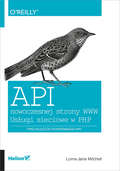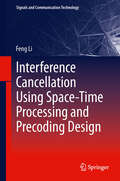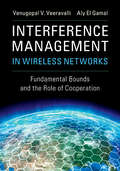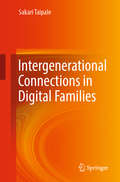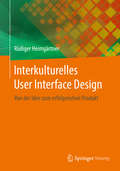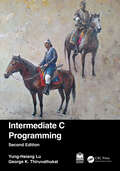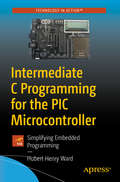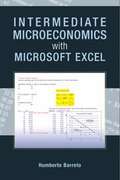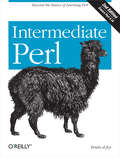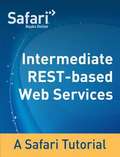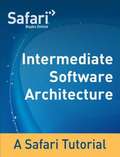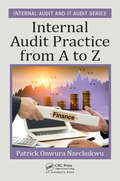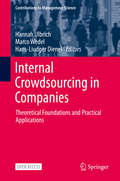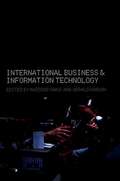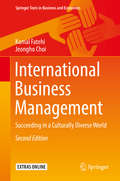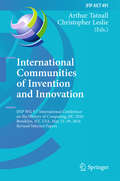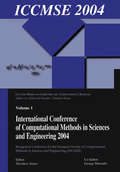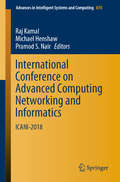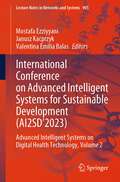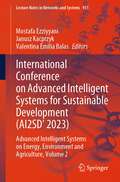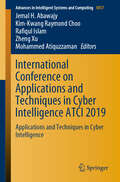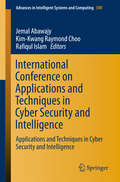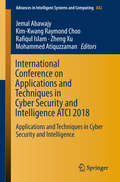- Table View
- List View
Interfejs API. Strategia programisty
by Daniel Jacobson Greg Brail Dan WoodsPoznaj potencja? interfejsów API!Internet to gigantyczna sie? urz?dze? po??czonych ze sob?. Jego potencja? wykorzystuj? wszyscy i ka?dy jest ?wiadom tego, ?e pojedyncze urz?dzenie bez po??czenia z sieci? nic nie znaczy. Podobnie jest z systemami informatycznymi. Mo?liwo?? integracji z sieci?, tworzenia rozszerze? oraz wymiany danych pomaga twórcom aplikacji rozwin?? skrzyd?a i odnie?? sukces na szerok? skal?. Zastanawiasz si?, jak otworzy? Twój system na ?wiat? Interfejs API to jedyna droga!Si?gnij po t? ksi??k? i przekonaj si?, jak przygotowa? wygodny interfejs API, z którego programi?ci b?d? korzystali z przyjemno?ci?. Na kolejnych stronach znajdziesz kluczowe zasady projektowania interfejsów API, sposoby zabezpieczania API oraz zarz?dzania u?ytkownikami. Ponadto dowiesz si?, jak zarz?dza? ruchem sieciowym, obs?ugiwa? interfejs API oraz mierzy? sukces Twojego API. Na sam koniec zobaczysz, jak zaanga?owa? projektantów w proces adaptacji. Ta ksi??ka jest doskona?ym ?ród?em informacji dla wszystkich osób chc?cych zrozumie?, czym s? interfejsy API, jak wykorzysta? drzemi?cy w nich potencja? oraz jak unikn?? typowych zagro?e? i problemów. Twoja lektura obowi?zkowa! Dowiedz si? o rozwoju interfejsów API, a tak?e dlaczego Twoja firma mo?e ich wymaga?. Zaznajom si? z rolami w?a?cicieli zasobów, dostawców i projektantów w ?a?cuchu warto?ci interfejsu API. Opracuj strategie zwi?zane z projektowaniem, implementowaniem i wprowadzeniem produktu na rynek. Opracuj efektywny proces na potrzeby zarz?dzaniami zabezpieczeniami i u?ytkownikami. Rozwi?? problemy natury prawnej, takie jak zarz?dzanie prawami i warunki u?ytkowania. Zarz?dzaj ruchem sieciowym i komfortem pracy u?ytkowników za pomoc? pewnego modelu operacyjnego. Okre?l metryki wymagane do ustalenia skali powodzenia interfejsu API.Wszystko, co powiniene? wiedzie? o interfejsach API!
Interference Cancellation Using Space-Time Processing and Precoding Design
by Feng LiInterference Cancellation Using Space-Time Processing and Precoding Design introduces original design methods to achieve interference cancellation, low-complexity decoding and full diversity for a series of multi-user systems. In multi-user environments, co-channel interference will diminish the performance of wireless communications systems. In this book, we investigate how to design robust space-time codes and pre-coders to suppress the co-channel interference when multiple antennas are available. This book offers a valuable reference work for graduate students, academic researchers and engineers who are interested in interference cancellation in wireless communications. Rigorous performance analysis and various simulation illustrations are included for each design method. Dr. Feng Li is a scientific researcher at Cornell University.
Interference Management in Wireless Networks: Fundamental Bounds and the Role of Cooperation
by Venugopal V. Veeravalli Aly El GamalLearn about an information-theoretic approach to managing interference in future-generation wireless networks. Focusing on cooperative schemes motivated by coordinated multi-point (CoMP) technology, the book develops a robust theoretical framework for interference management that uses recent advancements in backhaul design, and practical pre-coding schemes based on local cooperation, to deliver the increased speed and reliability promised by interference alignment. Gain insight into how simple, zero-forcing pre-coding schemes are optimal in locally connected interference networks, and discover how significant rate gains can be obtained by making cell association decisions and allocating backhaul resources based on centralized (cloud) processing and knowledge of network topology. Providing a link between information-theoretic analyses and interference management schemes that are easy to implement, this is an invaluable resource for researchers, graduate students, and practicing engineers in wireless communications.
Intergenerational Connections in Digital Families
by Sakari TaipaleThis book provides a comprehensive review of how digital communication technology can help families network and communicate across generations, despite differences in family composition, residential location, cultural values and orientations. Covering the full spectrum of intergenerational relations (including child to parent, and parent to grandparent), it offers a positive view of the value of digital technology usage within families.The author focuses on three European countries: Finland, Italy and Slovenia, but also touches on other European countries and parts of the United States, revealing evidence that challenges ideas of universal adoption of information communication technology (ICT) and consistency in the social effects of such adoption in different regions and cultures. Further, the book discusses numerous other challenges and issues, such as:• the social transformations and technological developments that have made digital families possible;• the resulting changes in family roles, responsibilities, and practices; and• the theoretical and conceptual implications of digital communication-technology use in families.The author illustrates how ICT can facilitate family solidarity and how it helps to provide new ways of being together, and they discuss how social media, particularly instant messaging applications, helps develop affinity between family members better than traditional one-to-one personal communication tools. Combining highly nuanced material with fresh sociological thinking, it enhances readers’ theoretical understanding of the meaning of the ‘digital family’, making it a powerful resource for graduate and undergraduate students, as well as academics. Thanks to its structured format with easy-to-understand explanations, it appeals to practitioners and researchers alike.
Interim Report on 21st Century Cyber-Physical Systems Education
by Committee on 21st Century Cyber-Physical Systems EducationCyber-physical systems (CPS) are increasingly relied on to provide the functionality and value to products, systems, and infrastructure in sectors including transportation, health care, manufacturing, and electrical power generation and distribution. CPS are smart, networked systems with embedded sensors, computer processors, and actuators that sense and interact with the physical world; support real-time, guaranteed performance; and are often found in critical applications. Cyber-physical systems have the potential to provide much richer functionality, including efficiency, flexibility, autonomy, and reliability, than systems that are loosely coupled, discrete, or manually operated, but also can create vulnerability related to security and reliability. Advances in CPS could yield systems that can communicate and respond faster than humans; enable better control and coordination of large-scale systems, such as the electrical grid or traffic controls; improve the efficiency of systems; and enable advances in many areas of science. As CPS become more pervasive, so too will demand for a workforce with the capacity and capability to design, develop, and maintain them. Building on its research program in CPS, the National Science Foundation (NSF) has begun to explore requirements for education and training. As part of that exploration, NSF asked the National Research Council of the National Academies to study the topic. Two workshops were convened in 2014, on April 30 and October 2-3 in Washington, D. C. , to explore the knowledge and skills required for CPS work, education, and training requirements and possible approaches to retooling engineering and computer science programs and curricula to meet these needs. "Interim Report on 21st Century Cyber-Physical Systems Education" highlights emerging themes and summarizes related discussions from the workshops.
Interkulturelles User Interface Design
by Rüdiger HeimgärtnerDieses Fachbuch beschreibt den Weg der Entwicklung eines international nutzbaren Produktes mit Mensch-Maschine-Schnittstelle von der Theorie über die Konzeption und Gestaltung bis hin zur praktischen Umsetzung. Es werden die wichtigsten Konzepte in den Bereichen Philosophie, Kommunikation, Kultur und Ethnocomputing als Grundlage des interkulturellen User Interface Designs erläutert. Der Autor präsentiert direkt nutzbares handlungsrelevantes Wissen für die Prozesse der Internationalisierung und Lokalisierung von Software. Das Werk ist für ein allgemeines Publikum geschrieben, das sich für Softwareergonomie, Softwareengineering und das menschzentrierte Design im interkulturellen Kontext interessiert. Für Produktmanager und Usability Professionals sind die konkreten Empfehlungen und Checklisten für die direkte Umsetzung in der Produktgestaltung von besonderem Interesse.
The Interloper: Lee Harvey Oswald Inside the Soviet Union
by Peter SavodnikLee Harvey Oswald’s assassination of President Kennedy in 1963 remains one of the most horrifying and hotly debated crimes in American history. Just as perplexing as the assassination is the assassin himself; the 24-year-old Oswald’s hazy background and motivations#151;and his subsequent murder at the hands of Jack Ruby#151;make him an intriguing yet frustratingly enigmatic figure. Because Oswald briefly defected to the Soviet Union, some historians allege he was a Soviet agent. But as Peter Savodnik shows in The Interloper, Oswald’s time in the U. S. S. R. reveals a stranger, more chilling story. Oswald ventured to Russia at the age of 19, after a failed stint in the U. S. Marine Corps and a childhood spent shuffling from address to address with his unstable, needy mother. Like many of his generation, Oswald struggled for a sense of belonging in postwar American society, which could be materialistic, atomized, and alienating. The Soviet Union, with its promise of collectivism and camaraderie, seemed to offer an alternative. While traveling in Europe, Oswald slipped across the Soviet border, soon settling in Minsk where he worked at a radio and television factory. But Oswald quickly became just as disillusioned with his adopted country as he had been with the United States. He spoke very little Russian, had difficulty adapting to the culture of his new home, and found few trustworthy friends; indeed most, it became clear, were informing on him to the KGB. After nearly three years, Oswald returned to America feeling utterly defeated and more alone than ever#151;and as Savodnik shows, he began to look for an outlet for his frustration and rage. Drawing on groundbreaking research, including interviews with Oswald’s friends and acquaintances in Russia and the United States, The Interloper brilliantly evokes the shattered psyche not just of Oswald himself, but also of the era he so tragically defined.
Intermediate C Programming
by Yung-Hsiang Lu George K. ThiruvathukalRevised for a new second edition, Intermediate C Programming provides a stepping-stone for intermediate-level students to go from writing short programs to writing real programs well. It shows students how to identify and eliminate bugs, write clean code, share code with others, and use standard Linux-based tools, such as ddd and valgrind. This second edition provides expanded coverage of these topics with new material focused on software engineering, including version control and unit testing. The text enhances their programming skills by explaining programming concepts and comparing common mistakes with correct programs. It also discusses how to use debuggers and the strategies for debugging as well as studies the connection between programming and discrete mathematics. Including additional student and instructor resources available online, this book is particularly appealing as a classroom resource.
Intermediate C Programming for the PIC Microcontroller: Simplifying Embedded Programming
by Hubert Henry WardDelve into the exciting world of embedded programming with PIC microcontrollers in C. The key to learning how to program is to understand how the code works – and that is what you’ll learn here. Following C Programming for the PIC Microcontroller, this book continues exploring the coding required to control the PIC microcontroller and can be used as a standalone single reference, or paired with the previous title to enhance your programming skills. You'll see how to control the position of a servo motor and use the compare aspect of the CCP module to create a square wave with varying frequency. You'll also work with the capture aspect of the CCP to determine the frequency of a signal inputted to the PIC and use external and internal interrupts.This book breaks down the programs with line-by-line analysis to give you a deep understanding of the code. After reading it you’ll be able to use all three aspects of the Capture, Compare and PWM module; work with different types of interrupts; create useful projects with the 7 segment display; and use the LCD and push button keyboard. What You’ll LearnCreate a small musical keyboard with the PICManage a stepper motor with the PICUse the main features of the MPLABX IDEInterface the PIC to the real worldDesign and create useful programs based around the PIC18F4525 Who This Book Is ForEngineering students and hobbyist who want to try their hand at embedded programming the PIC micros.
Intermediate Microeconomics With Microsoft Excel
by Humberto BarretoThis unique text uses Microsoft Excel® workbooks to instruct students. In addition to explaining fundamental concepts in microeconomic theory, readers acquire a great deal of sophisticated Excel skills and gain the practical mathematics needed to succeed in advanced courses. In addition to the innovative pedagogical approach, the book features explicitly repeated use of a single central methodology, the economic approach. Students learn how economists think and how to think like an economist. With concrete, numerical examples and novel, engaging applications, interest for readers remains high as live graphs and data respond to manipulation by the user. Finally, clear writing and active learning are features sure to appeal to modern practitioners and their students. The website accompanying the text is found at www.depauw.edu/learn/microexcel.
Intermediate Perl: Beyond The Basics of Learning Perl (O'reilly Ser.)
by Randal L. Schwartz Tom Phoenix Brian D Foy<p>Get a clear roadmap for improving your skills with <i>Intermediate Perl</i>, and gain working knowledge of Perl's objects, references, and modules—ingredients that make the language so versatile and effective. Written by the authors of the bestselling Llama book, <i>Learning Perl</i>, and updated for Perl 5.14, this book offers a gentle but thorough introduction to intermediate programming in Perl.</p>
Intermediate RESTful Web Services
by Safari Content TeamThis is the second of a three-part series looking at how to build RESTful web services. The series covers all aspects of REST services, from basic HTTP-level interactions, through to matching these operations in your existing code and applications, network security, and adherence to REST standards. As the features and your experience with Web Services and REST increases, the methods and solutions for implementation become your focus of attention. The Java ecosystem provides a range of different tools and implementations that provide the basic structure and format for building RESTful aware applications.
Intermediate Software Architecture
by Safari Content TeamThis is the second in a series of three tutorials that access learning resources available from Safari Books Online that cover the skills that Software Architects need to be fluent in. This tutorial contains fourteen topics that range from core project requirements, to cost and time estimates, to important aspects like security, development and deployment activities. Each topic lists its objectives along with the estimated time required to read each resource covered by the topic. Complete this tutorial and you will be well on your way to understanding what is required to transition from an entry level software architect to a software architect manager.
Internal Audit Practice from A to Z (Security, Audit and Leadership Series)
by Patrick Onwura NzechukwuInternal Audit Practice from A to Z addresses the practice of internal auditing using GAAS (Generally Accepted Auditing Standards), GAGAS (Generally Accepted Government Auditing Standards) and International Standards for the Professional Practice of Internal Auditing (Standards)-IPPF, International Standards Organization (ISO), International Standards of Supreme Audit Institutions (ISSAI), International Standards on Auditing (ISA) as enunciated by the Institute of Internal Auditors (IIA), International Organization of Standardizations (ISO), International Organization of Supreme Audit Institutions (INTOSAI), Government Accountability Office (GAO) & International Federation of Accountants (IFAC). Unique in that it is primarily written to guide internal auditors in the process and procedures necessary to carry out professionally accepted internal audit functions, the book includes everything necessary to start, complete, and evaluate an internal audit practice, simplifying the task for even non-professionals. Internal Audit Practice from A to Z features A rich array of forms, figures, tables, and reports, making it a practical, hands-on book Provides comprehensive content that contains all the practical guidance necessary to start, complete, and evaluate an internal audit practice Details on how to ensure quality on internal audit function through peer review Current international standards for the professional practice of internal auditing and other relevant standards for reference Checklists for all practice procedures as well as a checklist of the internal control of virtually all aspects of business function A blend of professional practice with theory. Internal Audit Practice from A to Z is comprehensively rich, global reference is a must for public, private, NGOs, institutions—every organization.
Internal Crowdsourcing in Companies: Theoretical Foundations and Practical Applications (Contributions to Management Science)
by Hans-Liudger Dienel Marco Wedel Hannah UlbrichThis open access book examines the implications of internal crowdsourcing (IC) in companies. Presenting an employee-oriented, cross-sector reference model for good IC practice, it discusses the core theoretical foundations, and offers guidelines for process-management and blueprints for the implementation of IC. Furthermore, it examines solutions for employee training and competence development based on crowdsourcing. As such, the book will appeal to scholars of management science, work studies, organizational and participation research and to readers interested in inclusive approaches for cooperative change management and the IT implications for IC platforms.
International Business and Information Technology: Interaction and Transformation in the Global Economy
by Massood Samii Gerald KarushTopical and timely, this breakthrough text analyzes the relationship between international business operations and information technology. First, it assesses the impact of current developments in IT on the operation of multinational corporations, both on a practical and theoretical level, and explores how IT can improve competitive advantage. Secon
International Business Management: Succeeding in a Culturally Diverse World (Springer Texts in Business and Economics)
by Kamal Fatehi Jeongho ChoiThis textbook explores the theoretical and practical aspects of managing international business operations while also dealing with multi-cultural, multi-national and global issues of managing business expansion beyond the domestic market. A second, revised edition of Managing Internationally: Succeeding in a Culturally Diverse World, each chapter contains up-to-date material, in-depth coverage of topics, visual aids (i.e., charts, tables, etc.), and vignettes, making this new edition engaging, visually appealing and easily accessible for students taking International Business Management courses. The contents of this textbook are separated into four parts. Part one offers introductory information on the scope and importance of international business management as well as the social and ethical challenges. Part two covers cultural and behavioral topics. Part three discusses the strategic and operational aspects of international business management. Part four explores human resources and labor relations. To assist students, each chapter starts a preview section which includes an outline of the chapter indicating the important aspects along with a brief description of the major issues. Following the preview is a vignette that encapsulates the crux of the chapter, often presented in an amusing and engaging manner. To further help students focus on key issues, the text includes the list of useful business cases to which students can refer. To assist professors in teaching from this book, ancillary teaching materials such as sample syllabi, slides, tests and answer keys will be available for download.
International Communities of Invention and Innovation
by Arthur Tatnall Christopher LeslieThis book contains revised selected papers presented at the IFIP WG 9. 7 International Conference on the History of Computing, HC 2016, held in Brooklyn, NY, USA, in May 2016. The 13 full papers included in this volume were carefully reviewed and selected from numerous submissions. The papers cover a wide range of topics related to the history of computing and focus on the history of pre-existing relationships and communities that led to triumphs (and dead-ends) in the history of computing. This broad perspective helps to tell a more accurate story of important developments like the Internet and provide a better understanding of how to sponsor future invention and innovation. They reflect on histories that foreground the international community along four broad themes: invention, policy, infrastructure, and social history.
International Conference of Computational Methods in Sciences and Engineering (ICCMSE 2004)
by Theodore Simos George MaroulisThe International Conference of Computational Methods in Sciences and Engineering (ICCMSE) is unique in its kind. It regroups original contributions from all fields of the traditional Sciences, Mathematics, Physics, Chemistry, Biology, Medicine and all branches of Engineering. The aim of the conference is to bring together computational scientists from several disciplines in order to share methods and ideas. More than 370 extended abstracts have been submitted for consideration for presentation in ICCMSE 2004. From these, 289 extended abstracts have been selected after international peer review by at least two independent reviewers.
International Conference on Advanced Computing Networking and Informatics: ICANI-2018 (Advances in Intelligent Systems and Computing #870)
by Raj Kamal Michael Henshaw Pramod S. NairThe book comprises selected papers presented at the International Conference on Advanced Computing, Networking and Informatics (ICANI 2018), organized by Medi-Caps University, India. It includes novel and original research work on advanced computing, networking and informatics, and discusses a wide variety of industrial, engineering and scientific applications of the emerging techniques in the field of computing and networking.
International Conference on Advanced Intelligent Systems for Sustainable Development: Advanced Intelligent Systems on Digital Health Technology, Volume 2 (Lecture Notes in Networks and Systems #905)
by Mostafa Ezziyyani Janusz Kacprzyk Valentina Emilia BalasThis book encapsulates the innovative discussions held during the International Conference on Advanced Intelligent Systems for Sustainable Development (AI2SD'2023), which took place at Mohammed 6 University of Sciences and Health Casablanca, Morocco. This book delves into the multifaceted realm of advanced intelligent systems, specifically focusing on digital health technology. The book offers a comprehensive exploration of cutting-edge research and breakthroughs in this dynamic field, providing a holistic perspective on the latest advancements. Within these pages, you will find papers covering an array of captivating topics, including AI-driven diagnostics, wearable health devices, predictive analytics in health care, and much more. Each contribution delves into the synergy of intelligent systems and digital health, showcasing how these technologies intertwine to shape the future of healthcare. Designed for researchers, practitioners, and enthusiasts alike, this book serves as an invaluable resource for staying updated on the latest trends and developments in the intersection of advanced intelligent systems and digital health technology. Whether you are seeking to broaden your knowledge or seeking practical insights, this book caters to a diverse readership eager to harness the potential of these innovative domains.
International Conference on Advanced Intelligent Systems for Sustainable Development: Advanced Intelligent Systems on Energy, Environment and Agriculture, Volume 2 (Lecture Notes in Networks and Systems #931)
by Mostafa Ezziyyani Janusz Kacprzyk Valentina Emilia BalasThis book is a comprehensive compilation of groundbreaking insights stemming from the esteemed International Conference on Advanced Intelligent Systems for Sustainable Development (AI2SD'2023), hosted at Cadi Ayyad University Morocco. Focused on the crucial themes of energy, environment, agriculture, and industry, this book captures the essence of transformative discussions and cutting-edge research that unfolded during the conference. Within these pages, readers are invited to explore the intricate world of intelligent systems, where innovation converges to tackle the key challenges of sustainability. The book immerses its audience in a wealth of knowledge that deeply represents the latest advancements shaping the future landscape. Diverse topics are intricately woven into the fabric of this discourse, covering AI-driven solutions designed for energy optimization, environmental sustainability, precision agriculture, and intelligent industry applications. Each contribution serves as a testament to the collaborative efforts of researchers, practitioners, and experts who gathered to drive innovation at the intersection of intelligent systems and sustainable development. Crafted as an invaluable resource, 'Advancements in Intelligent Systems: AI2SD'2023 Proceedings‘ caters to a diverse readership eager to delve into the forefront of trends and developments emerging from the crossroads of advanced intelligent systems in energy, environment, agriculture, and industry. Whether you're a researcher, practitioner, or enthusiast, unlock the transformative potential inherent in these innovative domains.
International Conference on Applications and Techniques in Cyber Intelligence ATCI 2019: Applications and Techniques in Cyber Intelligence (Advances in Intelligent Systems and Computing #1017)
by Jemal H. Abawajy Kim-Kwang Raymond Choo Rafiqul Islam Zheng Xu Mohammed AtiquzzamanThis book presents innovative ideas, cutting-edge findings, and novel techniques, methods, and applications in a broad range of cybersecurity and cyberthreat intelligence areas. As our society becomes smarter, there is a corresponding need to be able to secure our cyberfuture. The approaches and findings described in this book are of interest to businesses and governments seeking to secure our data and underpin infrastructures, as well as to individual users.
International Conference on Applications and Techniques in Cyber Security and Intelligence
by Jemal Abawajy Kim-Kwang Raymond Choo Rafiqul IslamThis book presents the outcomes of the 2017 International Conference on Applications and Techniques in Cyber Security and Intelligence, which focused on all aspects of techniques and applications in cyber and electronic security and intelligence research. The conference provides a forum for presenting and discussing innovative ideas, cutting-edge research findings, and novel techniques, methods and applications on all aspects of cyber and electronic security and intelligence.
International Conference on Applications and Techniques in Cyber Security and Intelligence ATCI 2018: Applications And Techniques In Cyber Security And Intelligence (Advances In Intelligent Systems and Computing #842)
by Jemal Abawajy Kim-Kwang Raymond Choo Rafiqul Islam Zheng Xu Mohammed AtiquzzamanThe book highlights innovative ideas, cutting-edge findings, and novel techniques, methods and applications touching on all aspects of technology and intelligence in smart city management and services. Above all, it explores developments and applications that are of practical use and value for Cyber Intelligence-related methods, which are frequently used in the context of city management and services.
